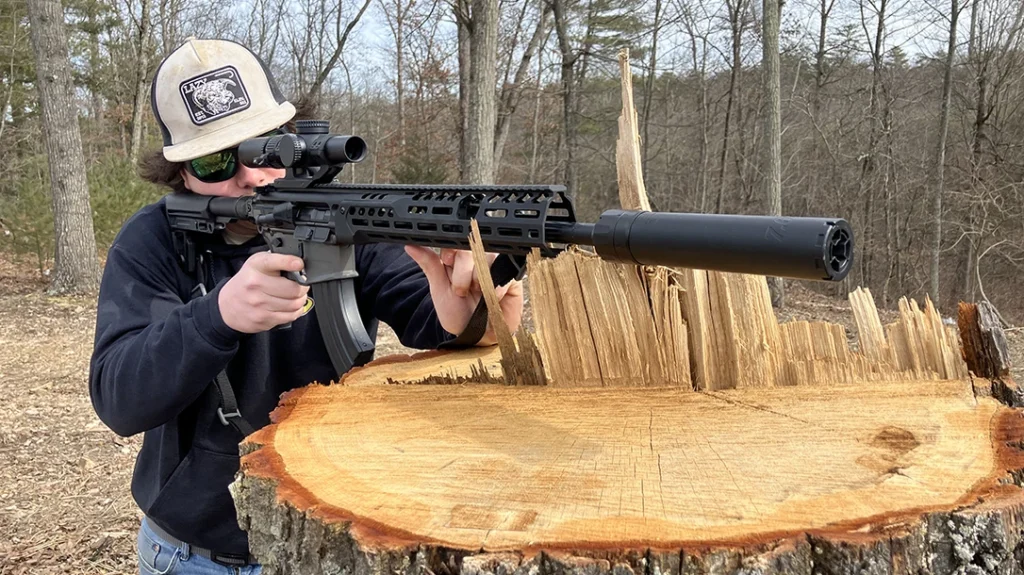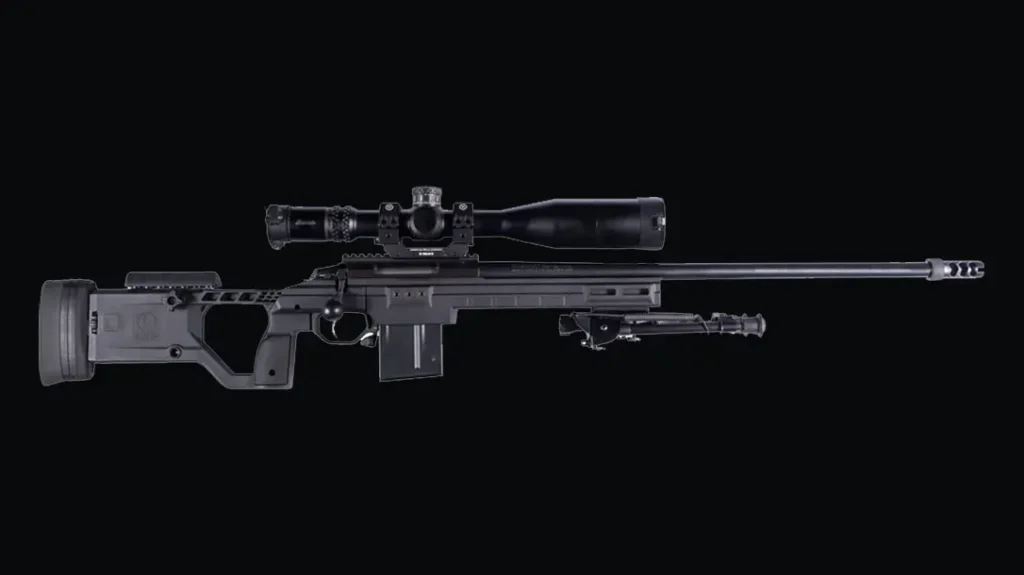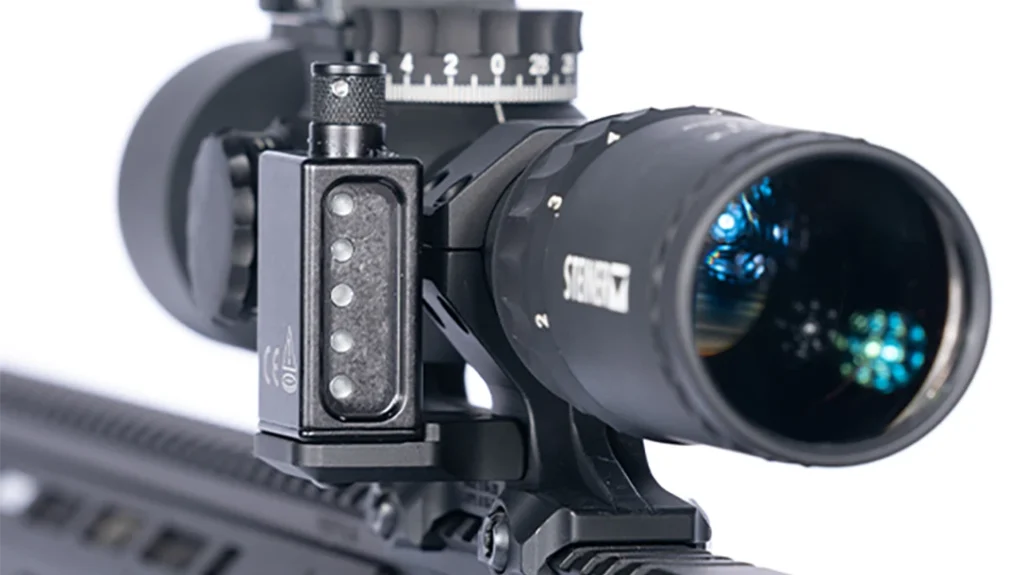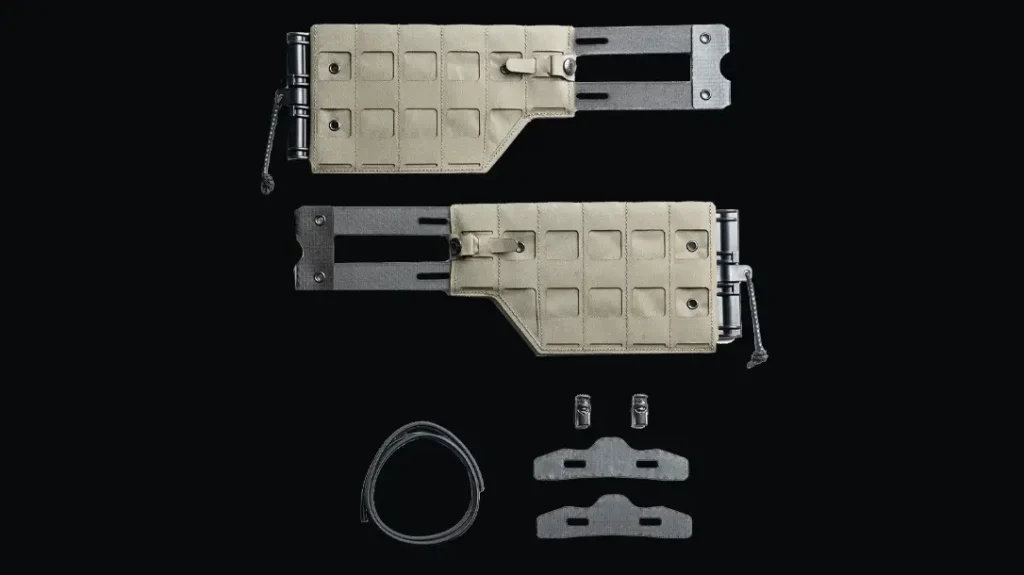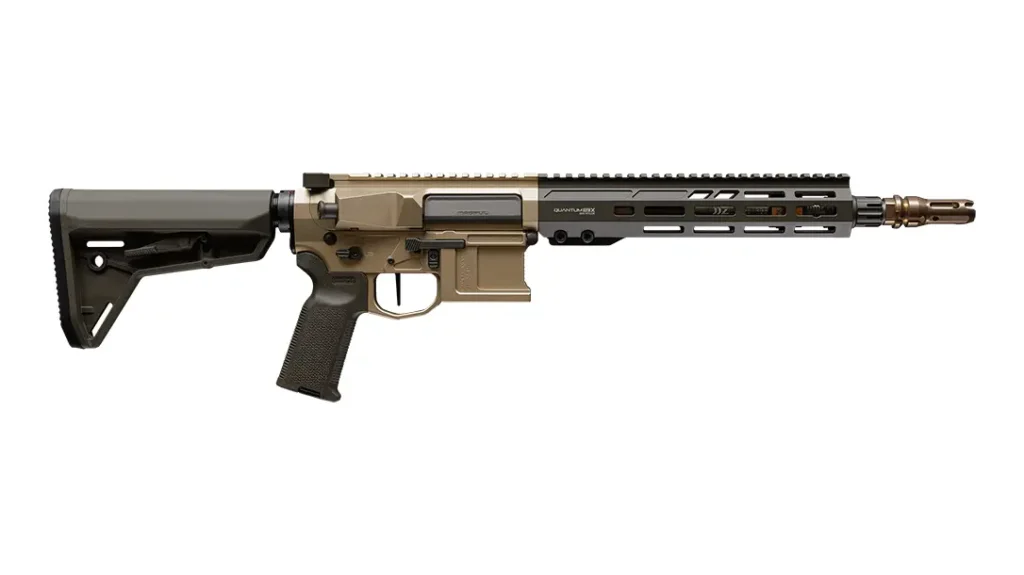This post was originally published on Athlon Outdoors.
The SIG SAUER (SIG) MCX SPEAR LT represents the latest rifle methodology typified by modularity without sacrificing rugged reliability or performance thanks to short-stroke gas-piston operation. While sharing aesthetics similar to those of the venerable AR, the MCX is a new approach that blends caliber adaptability and configurations.
What Is The MCX SPEAR LT?
The MCX is not another AR platform. The folding stock and modularity are big indicators of this. The MCX bolt carrier group is different than an AR’s. This stemmed from the initial user’s request for a folding stock instead of a typical AR buffer tube setup. SIG installed dual recoil springs above the bolt carrier group. With this, the charging handle sits slightly higher on the MCX receiver than on an AR. Not only did the dual recoil springs enable the folding stock but had other benefits in terms of smoother/softer recoil impulse, eliminated buffer tube wear associated with AR piston-driven rifles, and increased overall reliability/durability. Lastly, the intent to operate suppressed, accommodate various calibers, as well as with different barrel lengths including sub-10-inch translated into the MCX utilizing a self-regulating short-stroke gas-piston operating system.
The original MCX (2015) spawned from a US Special Operations Command (USSOCOM) request to develop a 7-pound, compact multi-caliber adaptable rifle, 5.56mm, .300 BLK, and 7.62×39, that would be predominantly operated suppressed. Military input/feedback has driven all three MCX generations with the latest being the MCX SPEAR LT.
Advertisement — Continue Reading Below
The MCX SPEAR LT’s big brother MCX-SPEAR 6.8×51, which was just adopted by the US Army as the XM7, is another example of the MCX’s development arc. All of the MCX-series improvements were driven by Tier One unit/DoD contract requests that sought to increase accuracy, modularity, and/or durability. The public has been fortunate to benefit from civilian models being offered as well.
MCX Generations
The SIG SAUER designers needed to meet a 50,000 round count criteria for the upper receiver to satisfy the initial solicitation that brought the MCX to life. The MCX Virtus took this even further with a 200,000-round endurance requirement before replacing even normal wear and tear components. Quality materials are a must along with a full understanding of high-wear parts.
SIG has designed the MCX upper with key components upgraded to steel versus aluminum; these parts are also easily replaceable. For example, the cam path and feed ramp inserts. The charging handle latches move over steel pins as opposed to aluminum pins. MCX barrels are hammer-forged and receive a nitride treatment for increased barrel life. This should allay any concerns over its modularity affecting durability in terms of wear and “loosening” up with use. The MCX SPEAR LT follows this path. The MCX SPEAR LT brings the long-anticipated addition of the 7.62×39 caliber to the MCX family.
Advertisement — Continue Reading Below
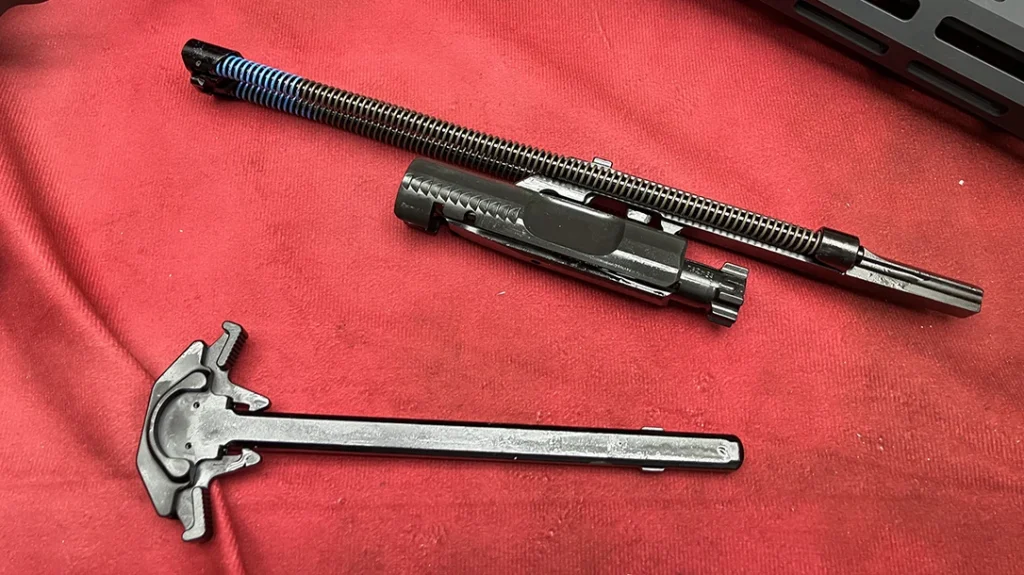
Discussions with SIG reps point out with the MCX SPEAR LT, “The bolt carrier group has had a minor redesign, moving the firing pin safety latch from the 12 o’clock position in the recoil assembly to a 9 o’clock position on the carrier. This reduces the energy needed to defeat the latch allowing for the use of aftermarket AR triggers. It also improves performance and reliability with surplus hard primer 7.62×39 ammo.”
MCX SPEAR LT has a lightened recontoured handguard with attachment screws for additional rigidity. Barrel manufacturing focused on maintaining accuracy even with SPEAR LT’s slimmer profile barrel. About a pound has been shaven off the MCX SPEAR LT upper compared to the MCX Virtus upper.
Advertisement — Continue Reading Below
Inevitable Evolution
I have been fortunate to experience each generation of MCX. I consider the current MCX SPEAR LT one of my “go-to” rifles. The SIG tweaks involving slimming and lightening the handguard are appreciated while maintaining rigidity. The ambidextrous bolt and release levers are also a nice touch. I jumped at the chance to experience a 7.62×39 MCX SPEAR LT Upper AR Conversion Kit.
While SIG offers the ability to install the 7.62×39 MCX upper on M4/AR15 spec lowers with the included M4 adapter eliminates the need for a buffer tube and a heavier weight hammer spring for igniting stout 7.62×39 surplus primers, I installed the MCX 7.62×39 upper on an existing MCX Virtus lower. I wanted to keep everything in the SIG MCX family. I had come to appreciate the MCX folding stock profile I already had on the MCX Virtus. However, I can certainly see where AR users would want to adapt their rifles to take advantage of the MCX upper operating system.
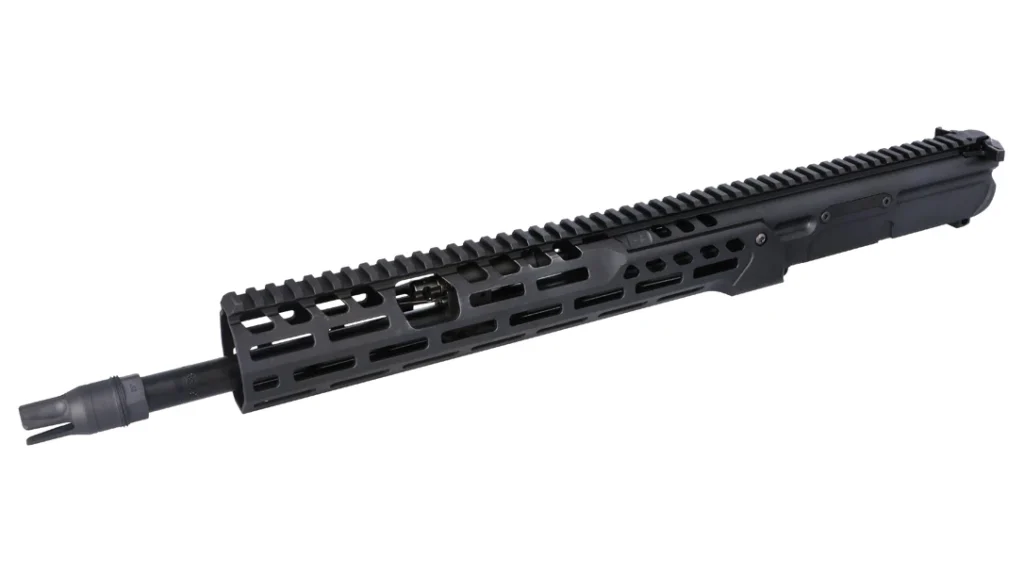
Advertisement — Continue Reading Below
7.62x39mm Caliber
The 7.62×39 is one of the calibers USSOCOM requested for the MCX. Their reasoning stems from a myriad of operational needs including wanting to leave behind empty cartridge cases similar to areas they are operating in versus 5.56mm or .300BLK that scream “U.S. was here.” The urge to merge MCX modularity, ergonomics, and accuracy with the 7.62×39 cartridge has been on my want list for some time. Duramag AR-style 7.62×39 magazines are used with the MCX SPEAR LT in place of AK magazines. This is important for maintaining MCX ergonomics and manipulation methods.
My fondness of the 7.62×39 may surprise some readers. It should not as the 7.62×39 is equivalent to the 30-30 in terms of ballistics with more loadings becoming steadily available. While Wolf and Red Army Standard 154 grain SP, 124 grain SP, and 123 grain FMJ loads were used in the MCX SPEAR LT, this was more for verifying no issue with functioning. The Hornady 123 grain SST load, plus the relatively new Sub-X 255 grain subsonic and 111grain Monoflex were the focus involving the MCX SPEAR LT 7.62×39 upper.
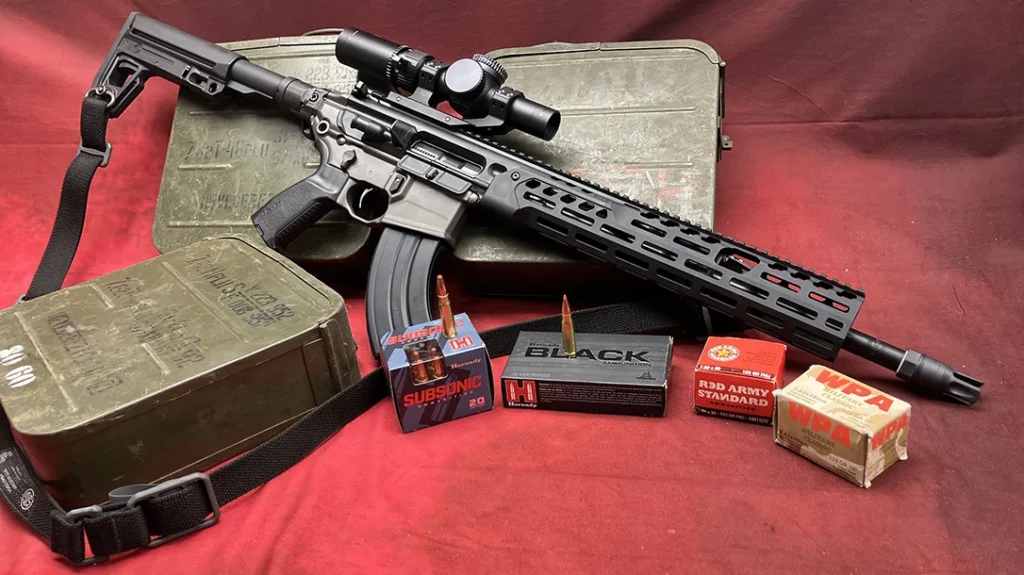
Advertisement — Continue Reading Below
Modern 7.62×39 Twist
There are many pages written in magazines and on various internet forums about what it would take to turn the 7.62×39 into more of a general-purpose rifle. The hold-up to more effective use of the cartridge at ranges past 100 yards revolves around better tolerances for increased accuracy potential, means for solid scope mounting, and ammunition of greater quality than what is offered in the surplus realm. The MCX SPEAR LT 7.62×39 Upper with Hornady ammunition solves this conundrum.
When Hornady began loading for the 7.62×39 with the 123 grain SST accuracy and terminal performance were secured for US users. The availability of a 7.62×39 subsonic load from Hornady levels the playing field between the .300BLK and 7.62×39 calibers. With the 111 grain Monoflex Hornady combined the technologies of their GMX and FTX bullet design. Constructed of a copper alloy, MonoFlex bullets offer a solid projectile that won’t separate retaining 95% of its original weight. Copper alloy differs from solid copper in that it is harder, tougher, and does not foul or increase pressure the way solid copper bullets do. Upon impact, the patented Flex Tip design initiates immediate expansion. Even at the lower velocities as the Monoflex moves downrange the Flex Tip will serve to expand the homogeneous bullet.
Over the years numerous deer and other animals have been taken using the Hornady premium 7.62×39 loads. The 7.62×39 has proven itself worthy afield. Whatever roles the MCX SPEAR LT 7.62×39 is considered for whether it is for hunting, personal defense, or tactical it fits the bill, especially with the premium Hornady fodder.
Advertisement — Continue Reading Below
Ancillary Support
A SIG SAUER SLH 7.62 suppressor was chosen for use with the MCX SPEAR LT. SIG’s SLX/SLH QD muzzle device/suppressor arrives pre-installed on the MCX SPEAR LT muzzle. The SLH uses SIG’s new clutch-LOK QD mounting system. SIG has put as much thought into the SLH 762 suppressor as the SPEAR LT. Not only is hearing protection addressed with the SLH but so is managing toxic fumes associated with back blast. MIT computing power was purchased to come up with a monolithic baffle design to keep fumes out of the operator’s face. Traditional CNC machining could not cope with the intricate metal work needed to comply with the design, so 3D printing, and DMLS manufacturing methods are used. The SLH remained mounted on the SPEAR LT for the majority of the evaluation.
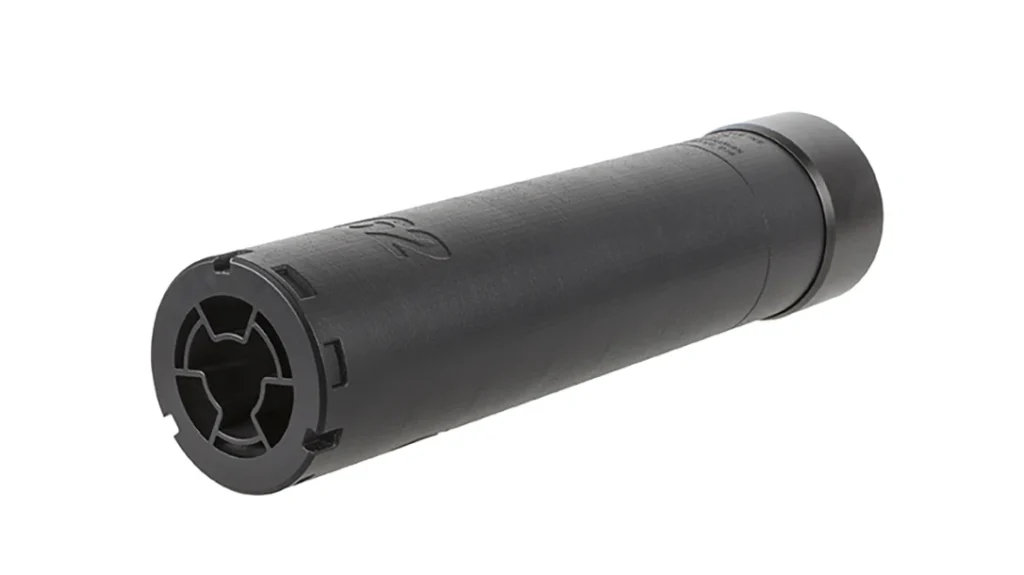
A ZeroTech Vengeance 1-6x24mm optic was mounted on the SIG MCX SPEAR LT upper. The Vengeance optic offers a 1x illuminated reticle setting for quick target acquisition at close range with both eyes open. A quick turn of the knob to 6x enables longer precision shots.
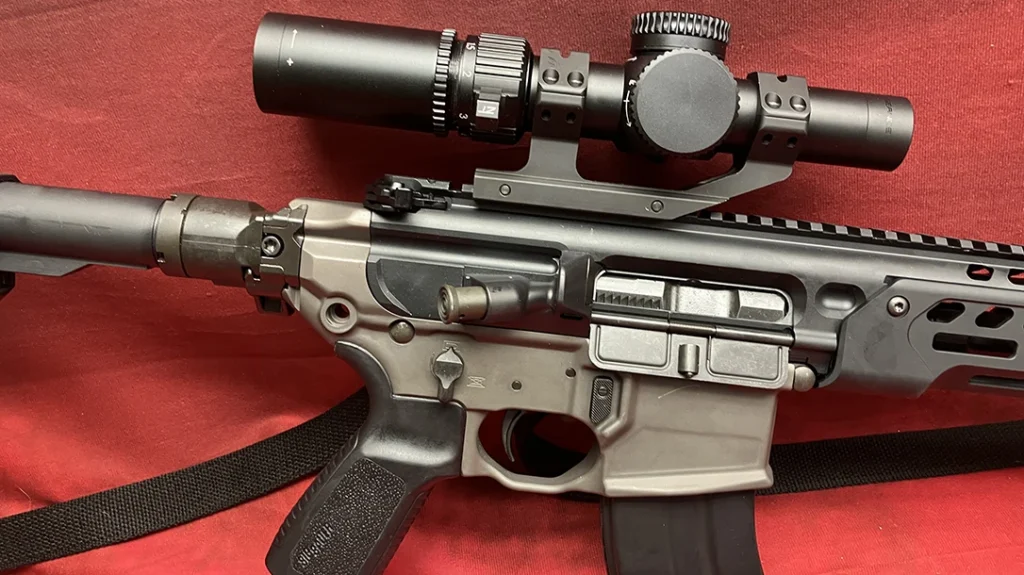
Range Time
The SIG SAUER short-stroke gas piston operating rod system proved its worth in keeping the bolt carrier group cooler and cleaner compared to direct impingement rifles, even with the SIG SLH suppressor mounted. While not trying to be unrealistic or overly harsh, the MCX SPEAR LT 7.62×39 was exposed to a high volume of fire typical of team tactics bounding drills. The method was not mindless ammunition wasting but rather wanting to confirm beyond a doubt that the SIG MCX SPEAR LT 7.62×39 and Duramag magazines delivered as advertised under the most extreme circumstances of operational functioning, including with suppressor mounted.
The 7.62×39’s trajectory is more conducive to making hits out to 300 yards than many give it credit for; a few inches high at 100 yards produces a 200-yard zero with 14 inches low at 300 yards. A 100-yard zero is another option. A 100-yard zero with the Hornady 123 grain SST drops only -2.2 inches at 150 yards and -6.6 inches at 200 yards. Three round groups at 100 yards were in the 1.5-1.75 inch range. Most will raise an eyebrow at this. 7.62×39 is not known for accuracy. However, the Hornady SST and Monoflex loads are not your typical 7.62×39 imported surplus offerings, and the SIG MCX SPEAR LT is not your typical firing platform. Group size remained the same with or without the SIG SLH suppressor attached. Shifts in point of impact were minimal as well.
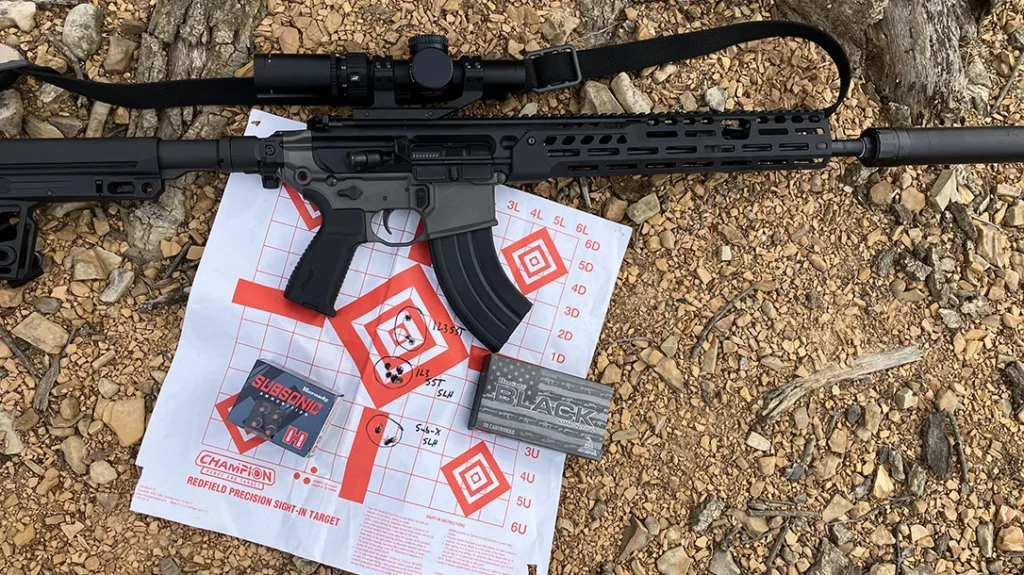
Running & Gunning
With Duramag magazines loaded with Hornady ammunition, the SIG MCX SPEAR LT 7.62×39 was taken to Echo Valley Training Center’s (EVTC) MOUT Village and Jungle Walk. Distances were kept 250 yards and in. Numerous qualities of the SIG MCX SPEAR LT became appreciated when used in these test environments. Magazine changes were much faster with the Duramag magazines versus typical AK 7.62×39 magazines with their distinctive manual of arms.
While my fingers were crossed, the SIG MCX SPEAR LT would not cycle reliably with the Hornady sub-sonic loads. This is typical when it comes to gas-operated rifles firing sub-sonic loads. With the Hornady 255-grain Sub-X bullets the sound of smacking steel was more noticeable than the muzzle blast. You just had a magazine-fedsingle shot to manipulate to send another quiet round downrange.
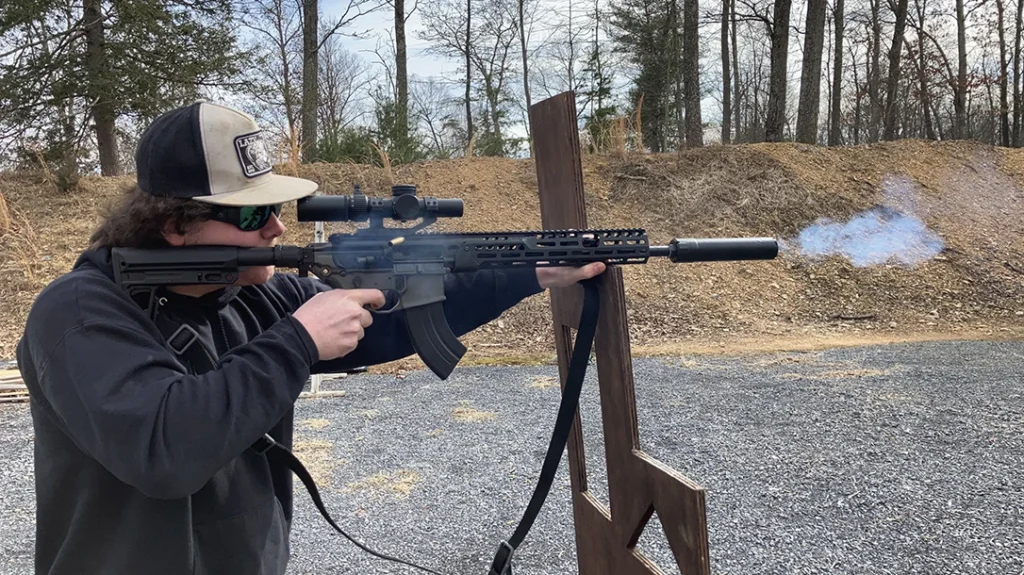
Final Say
The SIG MCX SPEAR LT 7.62×39 combined with quality optic mated to quality ammunition is a prime candidate for use as a general-purpose rifle. The SIG SLH suppressor is further sweetening of the package.
PERFORMANCE: SIG SAUER MCX SPEAR LT 7.62×39
| Hornady 123-grain SST | |
| Average Velocity | 2,218 FPS |
| Best Group | 1.50 inches |
| Wolf 123-grain SP | |
| Average Velocity | 2,332 FPS |
| Best Group | 2.66 inches |
| Hornady 255-grain Sub-X | |
| Average Velocity | 1,030 FPS |
| Best Group | 0.66 inches |
| Hornady 111-grain Monoflex | |
| Average Velocity | 2,368 FPS |
| Best Group | 1.66 inches |
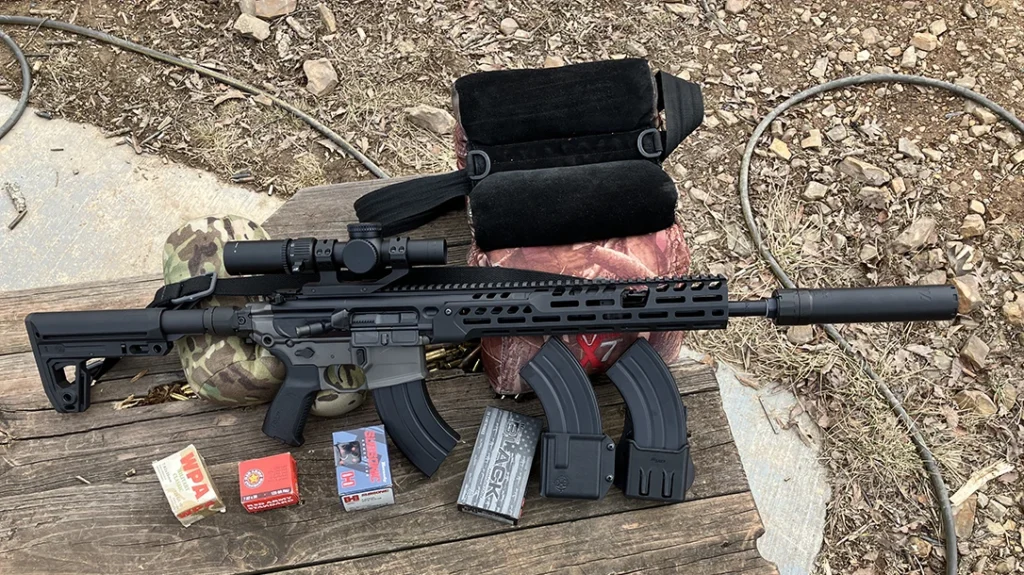
WHY OUR ARTICLES/REVIEWS DO NOT HAVE AFFILIATE LINKS
Affiliate links create a financial incentive for writers to promote certain products, which can lead to biased recommendations. This blurs the line between genuine advice and marketing, reducing trust in the content.
The post SIG SAUER MCX SPEAR LT 7.62×39 — A Win-Win Situation appeared first on Athlon Outdoors Exclusive Firearm Updates, Reviews & News.
